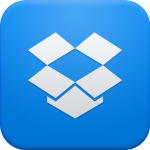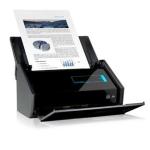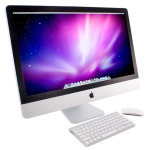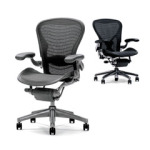St. Romain Law’s Technology Forward Office
I try to incorporate technology (where it makes sense) into my law practice. To give you a better idea of my workflow, I’ve included some of the technologies I use in my practice.
 1) Cloud Storage. All of my files get backed up to the cloud. Not only does this protect my client files in the event my hard drive(s) were to fail, but it also gives me access to client files anywhere I have internet connection. This can be helpful if we are at a meeting, deposition or in court and I need to quickly pull a document. The cloud is great! The main trick for me with filing everything paperlessly is ensuring that I have a consistent file naming structure and that I follow it. Sometimes, I don’t get to name my files exactly like I want to, according to my system, but fortunately
1) Cloud Storage. All of my files get backed up to the cloud. Not only does this protect my client files in the event my hard drive(s) were to fail, but it also gives me access to client files anywhere I have internet connection. This can be helpful if we are at a meeting, deposition or in court and I need to quickly pull a document. The cloud is great! The main trick for me with filing everything paperlessly is ensuring that I have a consistent file naming structure and that I follow it. Sometimes, I don’t get to name my files exactly like I want to, according to my system, but fortunately OSX Spotlight Alfred makes it easy to find documents wherever they’re hiding.
2) Paperless á la ScanSnap. I try my best to keep my office paperless; however, this is not always possible. A lot of original correspondences from the courts are still sent in paper form, and I am hesitant to throw them away immediately. I also have to keep original copies of many types of documents, and I still write the majority of my notes on a legal pad. However, I have a wonderful Fujitsu ScanSnap ix500 that I use to digitize my notes and all incoming paper. Every physical document that comes through my office gets scanned into the cloud, and either filed in paper form or shredded. The Fujitsu ScanSnap is simply amazing. It’s one of my favorite pieces of technology in my office, and t’d I highly recommend it.
3) State of the Art Computers. I’ve been a computer nerd since I upgraded my 386 to the first Pentium chip back in the 90’s. I currently use a 27 inch iMac, with 32 gigs of ram, a solid state hard drive, and a video card that I haven’t even come close to maxing out. Recently, I added a second display which sits besides my main computer in portrait orientation. This has dramatically increased productivity in terms of drafting legal documents and reviewing/editing multiple files. This has solved one of the main bottlenecks in going paperless: spreading out papers across your desk. In addition to the latest hardware, I also update all my software regularly. This way I’m never wasting any of my time and your money wait ing on a slow computer. In addition to my main workstation, I also have a MacBook Air and iPad that I take with me to court hearings, trial, depositions and client meetings. And since all my files are stored on the cloud, I’m able to work anywhere I have internet connection or a phone signal.
ing on a slow computer. In addition to my main workstation, I also have a MacBook Air and iPad that I take with me to court hearings, trial, depositions and client meetings. And since all my files are stored on the cloud, I’m able to work anywhere I have internet connection or a phone signal.
4) Software. There are a number of different types of software that I use daily to keep my workflow running smoothly. Some of the most important pieces of software I use include: Microsoft Office Suite (Word is still king for a lot of formatting tasks. I switched to the subscription-based Office product, and have really enjoyed not having to worry about paying for updates); Corel Word Perfect (because many firms still use it, and some judges request proposed orders in Word Perfect format); Adobe Acrobat Professional and ABBRY FineReader (PDF is king for storing final copies of documents, and the built in OCR functions of these programs makes working with large discovery projects a snap); Cosmolex Practice Management Suite (takes care of all my backend office and administrative needs); Safari (though I’m finding Chrome a better alternative); Google Apps for Work (professional email, and account management); TheFormTool Pro/Doxera (this helps me turn certain types of documents into forms that I can then tailor to specific clients’ needs. This helps me work more efficiently while maintaining accuracy and consistency); f.lux (to shift the color of my screen to a warmer temperature when the sun goes down — way easier on the eyes); VMWare (some programs only run on Windows, and this allows me to run a virtual Windows machine right along side OS X); TextExpander (this makes it really easy to automagically type in commonly used blocks of text); iTunes (sometimes a little background noise makes life better).
 4) Ergonomic Chair. All the technology in the world doesn’t do much good if you are in constant pain while working. I’ve been through a lot of office chairs, and finally bit the bullet to get a Herman Miller Aeron chair. This thing feels like you’re sitting on a cloud. In it, I’m ready to put in long hours for my clients without sacrificing my health. A comfortable attorney is a happy attorney, and the work product reflects that.
4) Ergonomic Chair. All the technology in the world doesn’t do much good if you are in constant pain while working. I’ve been through a lot of office chairs, and finally bit the bullet to get a Herman Miller Aeron chair. This thing feels like you’re sitting on a cloud. In it, I’m ready to put in long hours for my clients without sacrificing my health. A comfortable attorney is a happy attorney, and the work product reflects that.
5) Wireless Laser Printer. Wait, I thought you said you were paperless? As I said before, some things still have to get sent out on paper. This may be a demand letter, court filing, paper copies served on other parties in litigation, and anything else that I can’t work with digitally. I have a low-cost laser printer that helps make printing more economical. I recently upgraded to a HP Laserjet M551, and love the multiple paper handling options that come in a small and affordable package. With the printer connected to the network, I’m able to print wirelessly from whichever device I’m working from.
So there you have it: a quick rundown of the major pieces of technology I use in my office. If you have any questions about the technology I use, or suggestions for things I may have left out or overlooked, please contact me to let me know. I look forward to hearing from you!